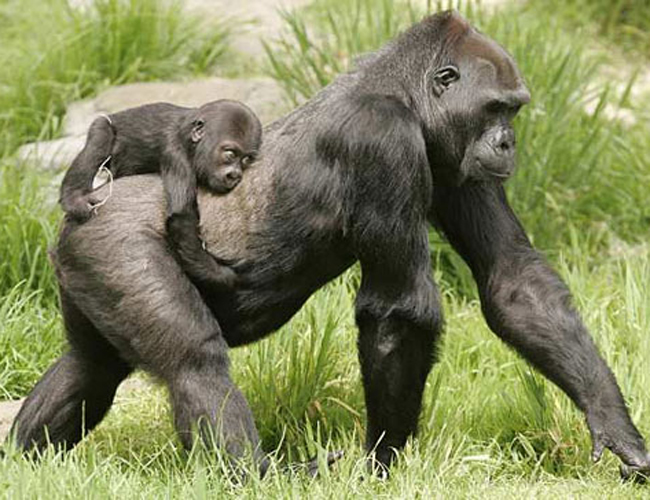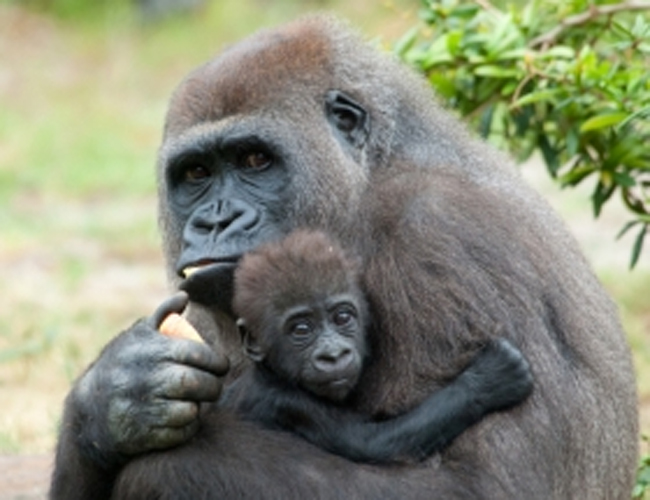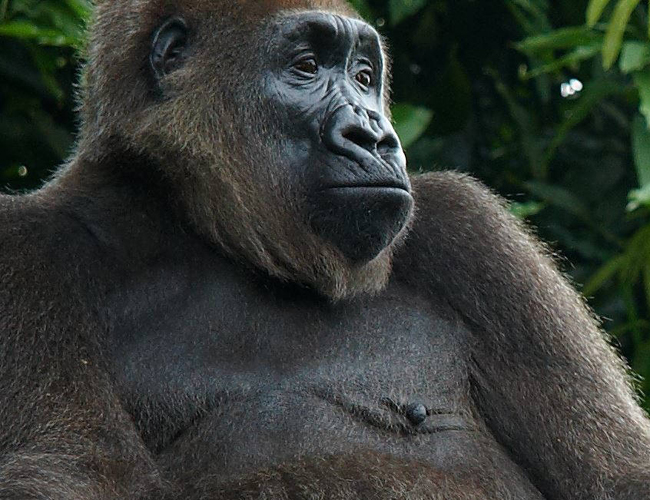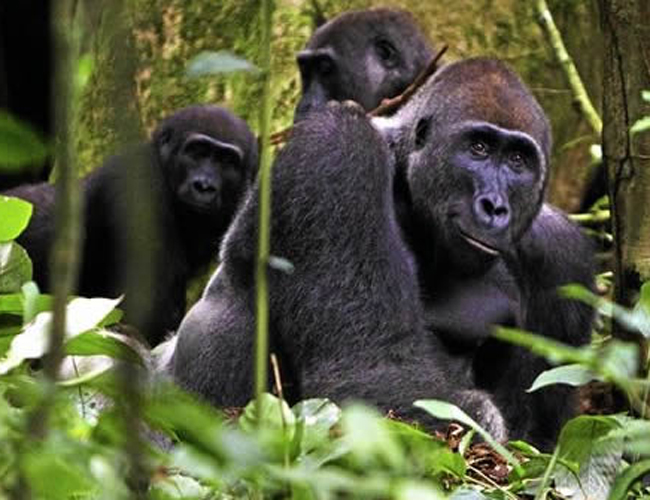







The Cross River Gorilla
The Cross River gorilla (Gorilla gorilla diehli) is a subspecies of the western gorilla (Gorilla gorilla).
It was named a new species in 1904 by Paul Matschie, a mammalian taxonomist working at the Humboldt University
Zoological Museum in Berlin, but its populations were not systematically surveyed until 1987.
Population: The Cross River gorilla a critically endangered sub-species.
Estimates from 2014 suggest that fewer than 250 mature Cross River
gorillas remain, making them the world's rarest great ape.
Location: It is the most western and northern form of gorilla, and is restricted to
the forested hills and mountains of the Cameroon-Nigeria border region at the headwaters of the Cross River (Nigeria).
It is separated by about 300 km (190 mi) from the nearest population of western lowland gorillas (Gorilla gorilla
gorilla), and by around 250 km (160 mi) from the gorilla population in the Ebo Forest of Cameroon.
Appearance: When comparing the Cross River gorilla to western lowland gorillas, they have
noticeably smaller palates, smaller cranial vaults, and shorter skulls. The Cross River gorilla is not known to differ
much in terms of body size or limb and bone length from western lowland gorillas. However, measurements taken from a
male suggest that they have shorter hands and feet and have a larger opposability index than western lowland gorillas.
According to Sarmiento and Oate's study published by the American Museum of Natural History, the Cross River gorilla has
been described as having smaller dentitions, smaller palates, smaller cranial vaults, and shorter skulls than western
lowland gorillas. The Royal Belgian Institute of Natural Sciences depicted the Cross River gorilla as the largest living
primate with a barrel-chest, relatively even hair, a bare black face and chest, small ears, bare shaped brows that are joined,
and nostril margins that are raised. They are clearly not the largest gorillas and the distinctiveness of their external
characters still needs to be verified.
Habitat: The Cross River gorilla, like many other gorilla subspecies, prefer a dense forest habitat
that is uninhabited by humans. Due to the Cross River gorilla’s body size they require large and diverse areas of the forest
to meet their habitat requirements. Similar to most endangered primates, their natural habitat exists where humans are often
occupying and using for natural resources. Forests that are inhabited by the Cross River gorilla vary in altitude from approximately
100 to 2,037 metres (328 to 6,683 ft) above sea level. Between 1996 and 1999, Field work was conducted on Afi Mountain in Cross
River State, Nigeria for a period of 32 months. The habitats of the Cross River gorilla are negatively affected by the drastic
deforestation and fragmentation of the land. These unfortunate events leave the gorilla species with few options for survival.
As a result of deforestation and fragmentation, there are drastic reductions in carrying capacity, in other words, the size of
the territories these animals inhabit has been significantly reduced. Because the population of humans living in this area is high,
the amount of resources available to the Cross River gorillas is limited.
Diet: The Cross River gorilla usually lives in small groups of 4-7 individuals with a few males and a few
female members. Their diet usually consists of fruit, but in fruit scarce months, (August–September, November–January) their diet
is primarily made up of terrestrial herbs, and the bark and leaves of climber and trees. Many of the Cross River gorilla food sources
are very seasonal and thus their diets are filled with very dense, nutritious vegetation that is usually found near their nesting sites.
It was found that the Afi Mountain group of Cross River gorilla diet mostly consisted Aframomum spp. (Zingiberaceae) herbs, but when
available in the wet season, they preferred to eat Amorphophallus difformis (Araceae) over the Aframomum, showing preference for certain
foods that were seasonal and also an affinity to the vegetation that was only found in their habitat.